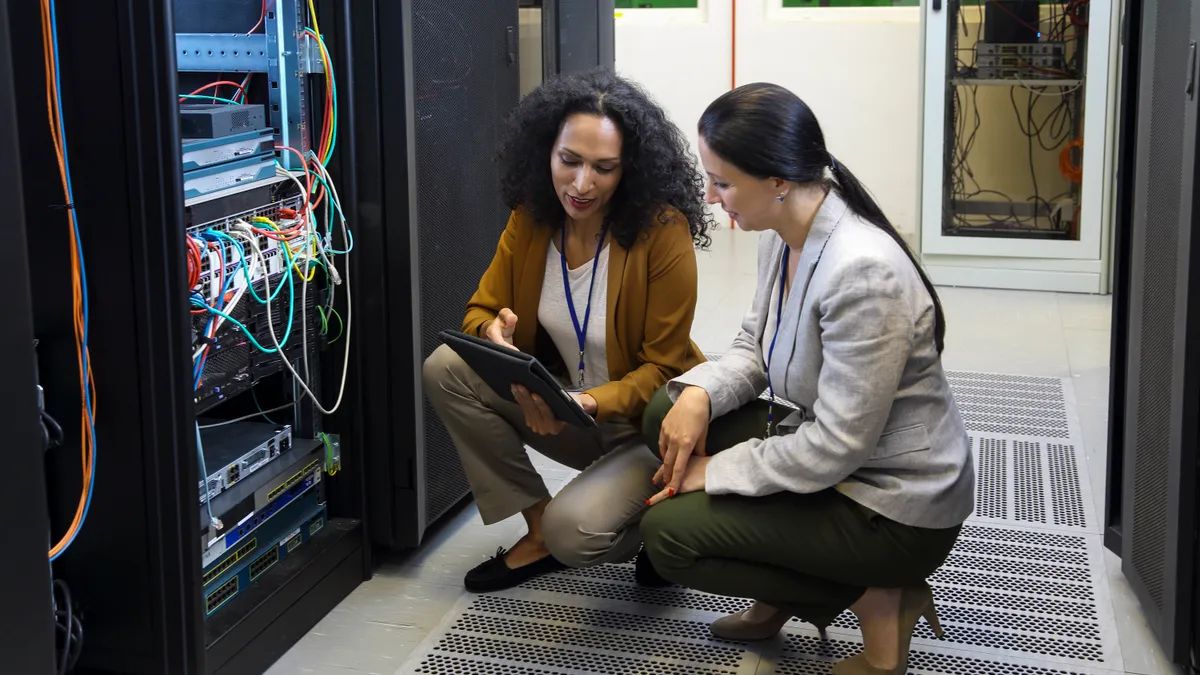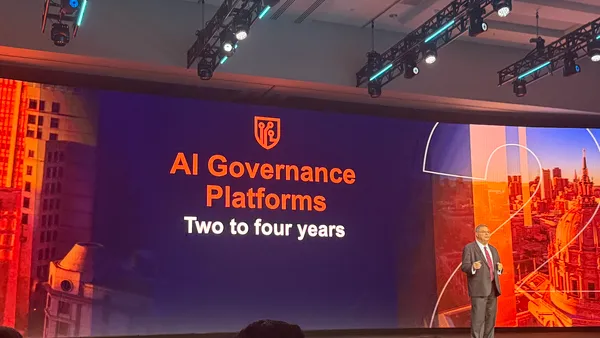Before the pandemic, the appetite for data analytics, and the techniques it can power, was clear. Infusing artificial intelligence (AI) and machine learning (ML) peppered every tech executive's shopping list for 2020.
For early adopters, the technology proved its worth amid the crisis by enabling processes to quickly pivot digitally, from onboarding new staffers with the help of code-savvy chatbots or automating responses to a surge in customer service requests.
"AI got shaken," said Sudheesh Nair, CEO of ThoughtSpot, in an interview with CIO Dive. COVID-19 forced leaders to shift AI focus on the fundamental part of the business, a reassessment that included asking how data could carry an organization through the crisis.
January 2020
At the start of 2020, leaders expected data analytics to augment its workforce, turning to AI to play a broad range of roles, from meeting compliance needs to informing business decisions or shaping the digital transformation journey.
According to an October 2019 survey from PwC, in 2020 decision makers wanted AI's help with:
- Managing risk, fraud and cybersecurity threats
- Automating routine tasks
- Helping employees make better decisions
- Gathering forward-looking intelligence
- Automating customer operations
Leveraging data's expanded presence in the C-suite, often by way of a chief data officer, CIOs planned to equip mid-management figures with the tools to embrace data, while process automation took care of low-level tasks and opened up staff's ability to focus on higher-value tasks.
Want to read more about technology priorities? Click here.
Business decisions under COVID-19
Bogged down by financial pressures and a recession, CIOs are pushing the throttle on digital transformation, using data to react — in real time and predictively — to the business changes the pandemic has introduced.
Armed with data analytics tools, CIOs steered how their companies adjusted to change in business operations, from supply chain disruptions to overnight spikes in demand. Automation helped companies adapt critical internal processes to the impossibility of physical contact.
Automation adoption delivered by software company Automation Anywhere helped one airline handle a massive influx of cancellations, a trend that CEO and co-founder Mihir Shukla expects to continue once volume recedes back to normal levels.
The ability to make predictions with models that provide confidence became of essence for tech leaders, said Arnab Chakraborty, managing director with Accenture Applied Intelligence, in an interview with CIO Dive.
As companies look for adaptability in a tight economic landscape, advanced data analytics can provide guidance.
"Data and AI is becoming important to the CFO," said Chakraborty, as finance leaders look to the IT side of the C-suite to help them build out the predictive models they'll require.
2021 and beyond
With lessons learned from the pandemic, CIOs will turn to data to improve digital commerce experiences, strengthen supply chains and support business goals as it tries to meet revenue goals in a recuperating economy.
In 2021 and beyond CIOs will stray away from experimentation for the sake of it. When evaluating data analytics projects, leaders will strive to tell signal from noise, focusing on the projects that will deliver long-term value
Leveraging AI projects initially put in place to address organizational gaps will help CIOs execute more holistic enterprise transformational activities, said Steve Hill, global head of innovation at KPMG.
Companies will dedicate resources to combine technologies and initiatives across enterprise. "Instead of just working on the supply chains or in the front office, you'll start to see people connecting the front, the middle and the back enterprise to reframe the enterprise, to make it more agile, more responsive to customer changes and or market dynamics," Hill told CIO DIve.
How priorities shifted?
Armed with data analytics, automation and machine learning tools, companies that endure the recession will try to ensure they can defend against future disruption.
The lessons learned in the pandemic will impact tech spending decisions. Across verticals, CIOs will advocate for a continued acceleration in data investments, according to Greg Layok, managing director of the technology practice at West Monroe.
"Being able to pull data together from different systems to get a single point of view and mine it for customer insights just becomes more important than ever before," said Layok. Those businesses not yet equipped with these capabilities will be driven to invest in systems that can support a data-informed decision making culture.
From there, it's a natural evolution into ML and AI, and the impact these technologies can have on traditional business processes.
"You have to be moving up the digital maturity scale to be able to ask the right questions," said Layok. "And then creating the experimentation to help start automating more business processes that take less human interaction along the way."
Executives investing in technology at the enterprise level will come out of the pandemic with a more intentional approach to investing in data. They'll want to know exactly how adopting a specific technology platform will transform their businesses and bring more efficiency across the enterprise.
The business impact of the coronavirus raised the bar for what it means to deliver value from a technology standpoint, according to Nair.
"Post COVID[-19], people will start to look at signal more than noise," Nair said, in an interview with CIO Dive. "I think that actually bodes well for AI as a technology and vendors who are producing high quality software with a very specific use case for verticals."
Trend to watch:
In the wake of the pandemic, one key space to watch is data management or data integration, where players such as Palantir or Cohesity are gaining ground, said Matthew Hopkins, intelligence analyst at CB Insights.
"They're both helping in data integration to the cloud, enabling analytics and BI," said Hopkins. Companies are grappling with getting all of their data in the right place with a solid governance structure in place in order to support AI applications.
"That's an area that's still going to continue to grow," Hopkins said.





















